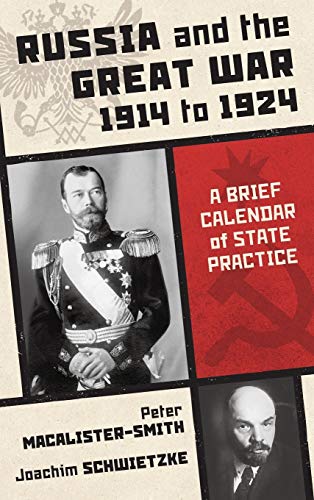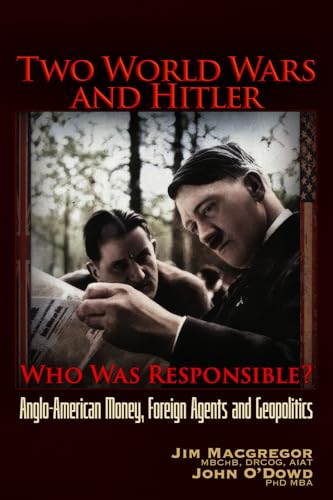
Russia and the Great War 1914 to 1924
by Peter Macalister-Smith
"A Brief Calendar of State Practice"
Popularity
0 / 5
* A book's popularity is determined by how it compares to all other books on this website.
Where to buy?
Buy from Amazon* If you buy this book through the link above, we may receive a small commission at no extra cost to you.
Russia and the Great War 1914 to 1924 by Peter Macalister-Smith
Details
War:
World War I
Perspective:
Researcher
True Story:
Yes
Biography:
No
Region:
Europe
Published Date:
2017
ISBN13:
9781616192754
Description
Brief Summary
Russia and the Great War 1914 to 1924 by Peter Macalister-Smith is a comprehensive examination of a tumultuous decade in Russian history, encapsulating the period of World War I, the Russian Revolution, and the subsequent civil war. The book is published by Talbot Publishing, an imprint of the Lawbook Exchange, Ltd. It serves as a chronicle of critical events in diplomacy and international relations, enriched with references to primary sources and documentary extracts. This reference book stands as a valuable baseline chronology for understanding the global shifts and upheavals during this period.
Main Themes and Topics
The primary theme of the book revolves around the transformation of Russia from an imperial power to the early stages of its existence as a Soviet state. It covers significant diplomatic and military developments, along with the internal chaos that characterized Russian society. Macalister-Smith provides detailed documentation of international relations during and after World War I and scrutinizes the political strategies that were at play during the Russian Revolution and its aftermath. The book also touches upon the interplay between Russian events and the broader global historical context, giving readers a clear view of how interconnected these processes were.
Writing Style and Tone
Peter Macalister-Smith’s approach is meticulous and scholarly, befitting the book’s nature as a reference work. The tone is factual and objective, aiming to inform rather than persuade. The narrative is structured chronologically, ensuring clarity for readers tracing the developments of this critical historical period. His ability to integrate documentary extracts alongside his analysis gives the text an added layer of authenticity and depth, making it a reliable resource for students and scholars of history.
Criticism
Some readers might find the book’s dense factual nature to be somewhat challenging, especially those without a strong background in Russian history or international relations of the early 20th century. While the chronological structure aids clarity, it can sometimes lead to a terse presentation that may not engage readers looking for a more narrative-driven account.









